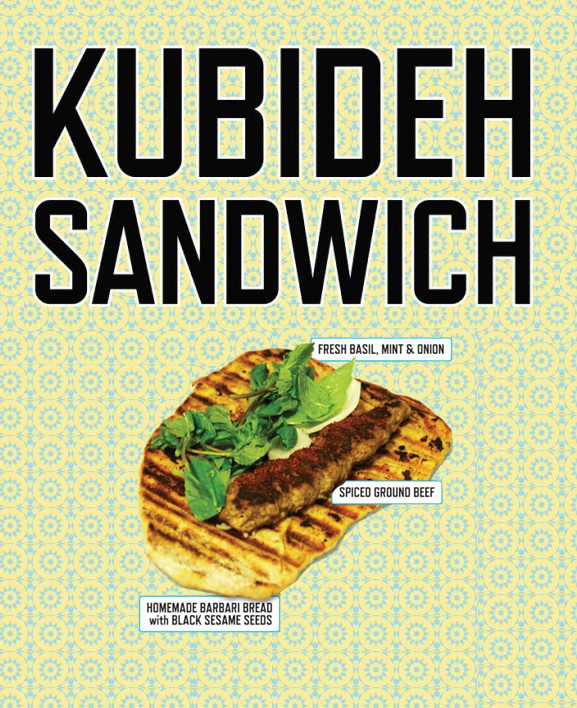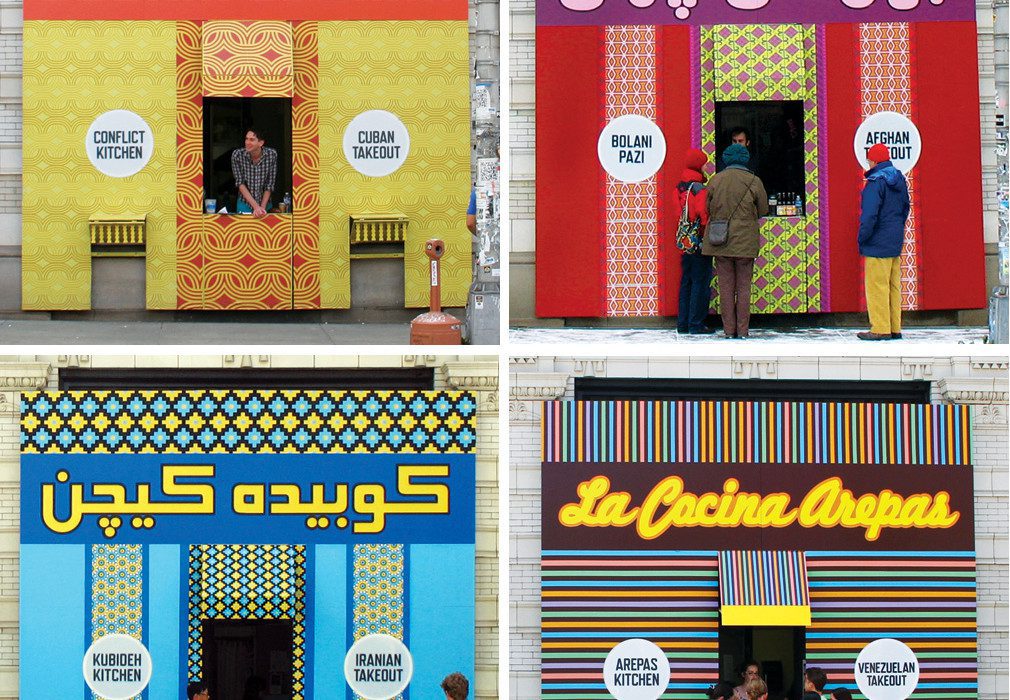An American take-away restaurant’s culinary journey from Latin American to Asian to the Middle Eastern and back, may appear inconsistent but there is a common theme uniting all four cuisines… they are from nations in conflict with the USA. Riddhima Khanna runs the rule over this unique concept.
There’s common ground in food. No matter what kind of conflict it is, no matter which side you’re on, everyone needs to eat.
The palate knows no boundaries, has no prejudices, and feels no hatred. Irrespective of ethnicity, food is one uniting factor that could make people sit together and unite in an experience that would transcend all negativities. This is essentially the idea which gave birth to Conflict Kitchen, a take-away restaurant in Pittsburgh, the brainchild of Jon Rubin and Dawn Weleski. The restaurant operates on celebrating food from one country at a time, the country of choice changing every six months. However, these are not just any countries from around the world. The menu comprises of dishes especially from places which are in conflict with the United States of America, and hence the name. The joint has served food from countries like Iran, Venezuela, Afghanistan and Cuba, and are catering its patrons- the culinary wonders of North and South Korea at present.
The Conflict Kitchen, however, is not a typical run-of-the-mill takeaway, serving exotic food. The essential idea here is not to simplify food but to complicate it, achieved by including the public in more ways than the gastronomical treat. The essential idea behind opening the kitchen was to engage the general public in discussions about these countries which they would otherwise have had heard of, only through the banal commentaries of the prejudiced popular media. Food, one of the ideal mediums for introducing people to different cultures, would be an ideal medium to get people together and help engage in a pseudo intellectual discussion.
However, the emphasis here is not on discussions about the government or politics, but about experiencing the common lives of the common people. For Rubin, the Conflict Kitchen is not a boutique restaurant. It is very much a street food restaurant, accessible to people looking to steal a quick bite during their lunch hour, or roaming the streets looking for a burger and fries joint. An interest in the country behind the food is initiated by the food wrappers, which not only contain information on the food being served but also feature interviews with immigrants/refugees from that particular country, on experiences like growing up, falling in love and other issues which would otherwise be considered too mundane. Also, for an even more personal experience, the servers employed not only possess the necessary required culinary expertise but also knowledge of the issues that surrounded these nations. The iteration of every project, too, is accompanied by discussions, events and other meet and greets which helps facilitate a ground for the patrons to engage even deeper into the unknown aspects of the ordinary.
To launch the current kitchen- a common ground that would help bring the people of Pittsburgh closer to the people of North and South Korea- a meal was organized for 250 people at a local church. Those sitting on the right side of the table were served traditional South Korean fare while those sitting on the left were served North Korean dishes. Typical to the Conflict Kitchen, the place mats bore interviews with people from the two countries, highlighting internal relationships and experiences post immigration. Similarly, there was once a Persian dinner party which linked diners in Pittsburgh with diners in Tehran via video chat. The Conflict Kitchen therefore is not only about the food, but also about the conversation. The current menu serves the patrons portions of typically Korean food like Bibimbop, Tteokbokki, Kimchi and Songpyeon, all prepared with meticulous care to maintain the authenticity of the dish. Similarly, in the previous instalments, dishes like Arepa (Venezuela), Kubideh (Iran) and Ropa Vieja (Cuba) were served.

The idea for the Korean chapter came to Rubin while he was exploring Cuba. He chanced upon the Korean embassy, walked up to the door, knocked, and promptly asked the attaché all about the cuisine from his country. However, he says, it were the tips collected via informal interactions with common people which threw more light on the life and times of Korean cuisine. The wrapper too, typically, consists of interviews with North Korean defectors (they refuse to term themselves refugees) who tell the world all about love, life and family viewed through the glasses not rose-tinted by Western ideologies. That life there is different, that life there is not cakewalk, and yet manages to have its own comfort, its own beauty.
The Conflict Kitchen, therefore, is a success. Rubin mentions an instance where once a Buddhist and Muslim struck up a conversation waiting in line to be served, and how the conversation covered issues from food to politics to religion. An event, however minuscule, which displayed that the common people from countries, which have otherwise been dubbed as hostile towards each other, do not necessarily feel any animosity towards the other. And that a message can be put across just as affectively without taking the revolver out of it’s holster.














